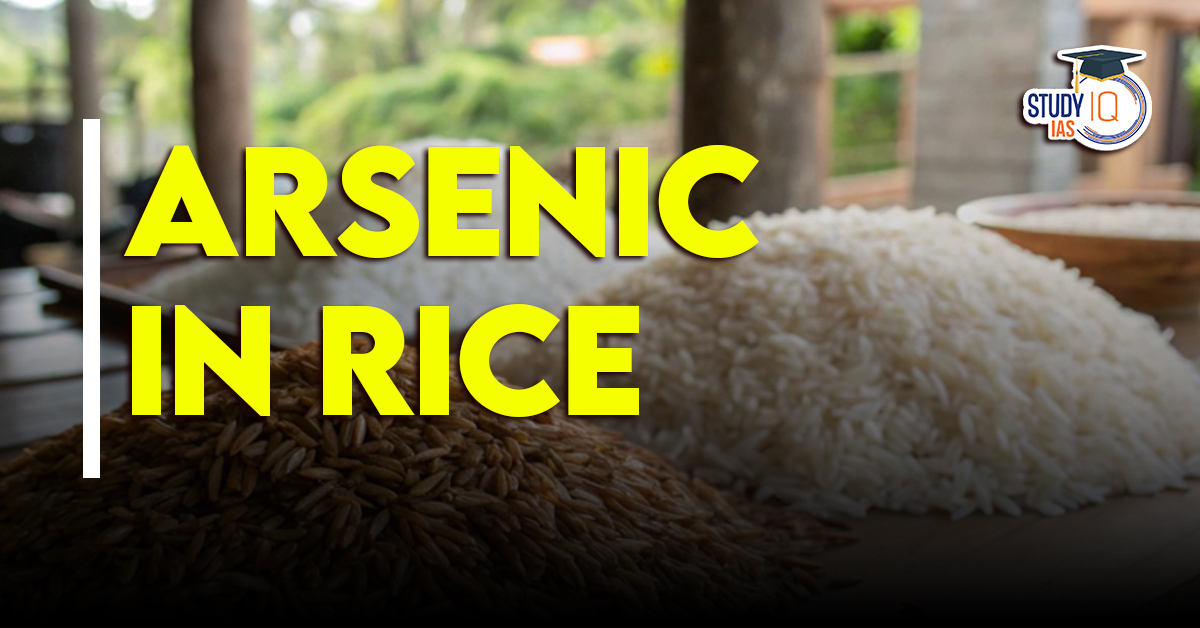Table of Contents
Context: According to a recent study, Climate Change is likely to increase Arsenic contamination in Rice.
Rising Arsenic Levels in Rice: Key Findings of the Study
- When CO₂ levels and temperature rise at the same time, arsenic levels in rice also go up.
- This arsenic comes from the soil and water where rice is grown.
- Flooded fields (paddies), where rice is usually grown, make it easier for the plant to absorb arsenic.
What is Arsenic?
- Arsenic is a toxic element found naturally in soil and water, and also comes from industrial pollution.
- The form of arsenic that builds up in rice (called inorganic arsenic) is especially harmful to humans.
- Eating rice with high arsenic levels for a long time can lead to:
- Cancers: skin, bladder, and lung
- Heart diseases, Diabetes, Pregnancy problems, Weaker immunity, etc.
- Countries at greater Risk: India, Bangladesh, China, Vietnam, Indonesia.


 List of National Parks in India 2025, Ch...
List of National Parks in India 2025, Ch...
 Bonnet Macaques: Habitat, Features, Beha...
Bonnet Macaques: Habitat, Features, Beha...
 Periyar Tiger Reserve, Map, Flora, Fauna...
Periyar Tiger Reserve, Map, Flora, Fauna...

























